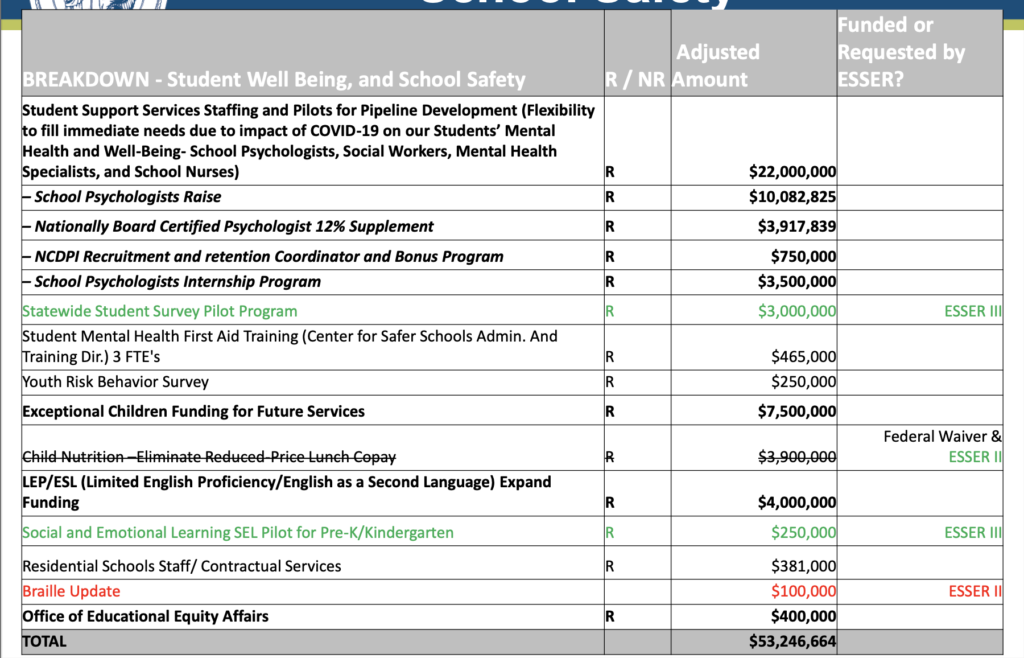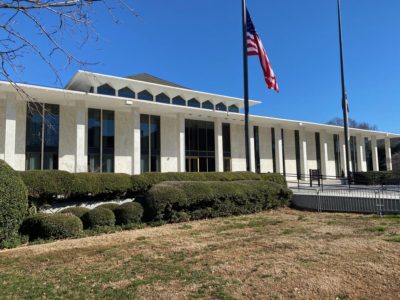
Representatives of the State Board of Education and state Department of Public Instruction (DPI) presented to lawmakers Wednesday a version of their budget priorities that include changes due to the availability of federal COVID-19 relief funds.
The new budget priorities take advantage of federal funds for some areas, leaving state money available to be used elsewhere. The total request for almost $190 million was heard by the House education appropriations committee.
In the following document, the number crossed through is the previous budget ask. The new number represents what the State Board and DPI now want.

Freebird McKinney, The State Board of Education’s director of government and community relations, and Jamey Falkenbury, DPI’s director of legislative affairs, presented to lawmakers. McKinney pointed out that federal funds have become available to help address statewide learning challenges and recovery from COVID-19, which is why the new budget request for that line item is substantially different from the previous one.
Below is a document breaking out the line items from the “Addressing Statewide Learning Challenges and Recovery” section. Money available from the most recent round of federal COVID-19 relief is referred to in the document below as “ESSER III” and is in green. The numbers in black are requests for state funds. The numbers listed in red are from ESSER II, the second round of federal COVID-19 relief. (ESSER stands for “Elementary and Secondary School Emergency Relief.”)

Lawmakers also saw a more detailed look at the other sections for which DPI and the State Board are requesting money. Overall, the Board and DPI are asking for about $53 million for student well-being and school safety. The request is made up of mostly state but also some federal dollars.

DPI and the State Board are also asking for nearly $7 million for their education workforce development plan. The turnaround principal training program was removed from the list because it can be funded by federal COVID-19 relief.

School business system modernization (SBSM) saw a change in funding requests from previous iterations, as seen in the chart below. SBSM aims to allow the state, DPI, and school districts to make better-informed decisions, implement them quickly, and, ideally, reduce the cost of data-driven decision-making. It was created by the legislature (Session Law 2016-94 Section 8.15).
Falkenbury said significant investment in SBSM is needed to keep the state’s plan to modernize its business systems on track. The lack of a comprehensive budget during the last two years has really hamstrung efforts to move forward in this area, Falkenbury said.

Below is the budget request for “Connecting middle/high school to post-secondary/career opportunities.”

And finally, here were the budget requests for other items not covered under other specific sections:

The committee meeting comes in a week where multiple House appropriations committees are beginning the process of developing a House budget. The Senate and the House generally alternate which chamber drafts the budget bill first each long session. This year, the Senate was slated to go first. But, as WRAL reported last week, House leaders decided to move forward with developing their own budget despite the lack of a spending plan from the Senate.
Correction: This article originally stated that Freebird McKinney was the state Department of Public Instruction’s director of government and community affairs. He is the State Board of Education’s director of government and community relations.
Recommended reading



